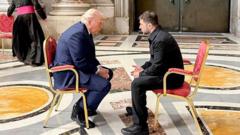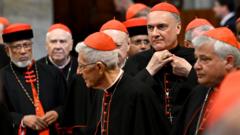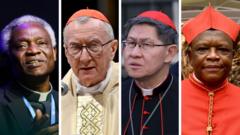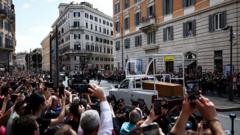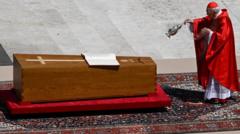The Vatican has confirmed that the conclave to choose a new pope will convene on May 7, following the recent death of Pope Francis. This upcoming election, involving over 130 eligible cardinals, will require a two-thirds majority to elect the new leader of the Roman Catholic Church, reminiscent of past papal elections characterized by secret ballots and significant global attention.
Conclave for New Pope Set to Begin on May 7 Following Death of Francis

Conclave for New Pope Set to Begin on May 7 Following Death of Francis
The Vatican announces preparations for the upcoming conclave to elect a successor to Pope Francis, who passed away, with voting set to commence on May 7.
In the wake of Pope Francis' death last week at the age of 88, a conclave to select his successor is scheduled to begin on May 7, as announced by the Vatican. The meeting will take place in the Sistine Chapel, where participating cardinal-electors, all under the age of 80, will gather to cast their votes.
Out of the total 252 cardinals, over 130 appointed by Francis himself are eligible to participate in the voting process. A two-thirds majority is necessary to successfully elect a new pope. The conclave typically commences between 15 to 20 days after a pope's death, and in the previous election, it took just two days for Francis to be chosen.
During the conclave, a chimney situated atop the Sistine Chapel acts as a signal for the global audience regarding the outcome of the vote. If cardinals reach a consensus, white smoke will rise; if not, black smoke signals that discussions will continue. Cardinal representatives from various regions have already begun arriving in Rome to engage in preparatory meetings that are essential to the electoral process. These discussions, as highlighted by experts, are crucial in shaping the direction of the papal election.
Out of the total 252 cardinals, over 130 appointed by Francis himself are eligible to participate in the voting process. A two-thirds majority is necessary to successfully elect a new pope. The conclave typically commences between 15 to 20 days after a pope's death, and in the previous election, it took just two days for Francis to be chosen.
During the conclave, a chimney situated atop the Sistine Chapel acts as a signal for the global audience regarding the outcome of the vote. If cardinals reach a consensus, white smoke will rise; if not, black smoke signals that discussions will continue. Cardinal representatives from various regions have already begun arriving in Rome to engage in preparatory meetings that are essential to the electoral process. These discussions, as highlighted by experts, are crucial in shaping the direction of the papal election.

